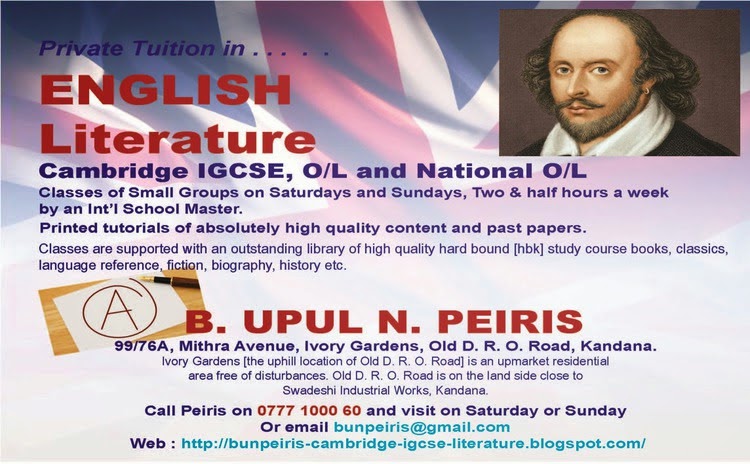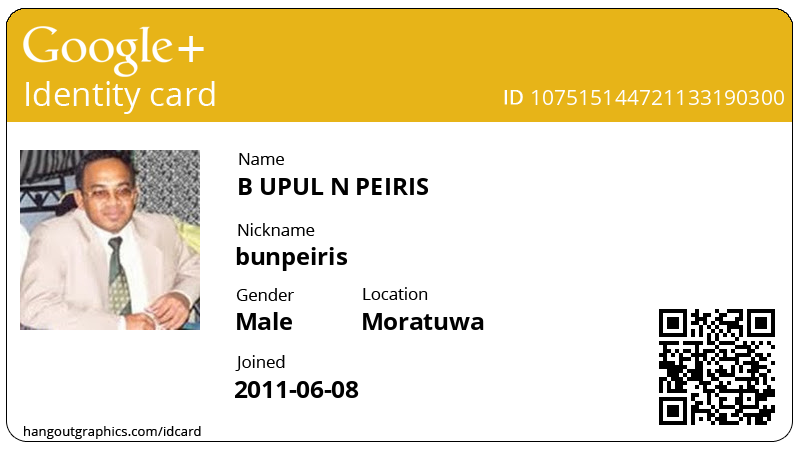MAKE THE MOST OF WHAT YOU HAVE
The 50th Law by 50 Cent & Robert Greene
nihil timendum est: fear nothing
The 50th Law by 50 Cent & Robert Greene
nihil timendum est: fear nothing
Alexander Selkirk, Juan Fernández Above image is by kind courtesy of Vicente Coz :panoramio.com/photo/38149331
http://www.flickr.com/photos/64933790@N00/5524254099/The image of Isla Alejandro Selkirk is reproduced by the kind courtesy
of Pato Novoa
Above image is by kind courtesy by Michael Faulkner The farmed goats in the picture above, from a neighbouring island, are as close to feral as you are likely to find in this country.:
//thebluecabin.blogspot.com/2010/05/feral-goats.html
//thebluecabin.blogspot.com/2010/05/feral-goats.html
The image of
the Statue in memory to Alexander Selkirk in Lower Largo is reproduced by
courtesy of James Denham http://www.geograph.org.uk/photo/1368919
Most of us are like Selkirk when he first found himself stranded- we look at our material resources and wish we had more. But a different possibility exists for us as well-the realization that more resources are not necessarily coming from the outside and that we must use what we already have to better effect. What we have in hand could be research material for a particular book, or people who work within our organization. If we look for more-information, outside people to help us-it won’t necessarily lead to anything better; in fact the waiting and the dependence makes us less creative. When we go to work with what is there, we find new ways to employ this s material. We solve problems, develop skills we can use again and again, and build up our confidence. If we become wealthy and dependent on money and technology, our minds waste away and that wealth will not last.
Above is a gleaning from a positive psychology book titled “The 50th Law” written by 50 Cent & Robert Greene.

Above image by kind courtesy of jchatoff.wordpress.com/tag/alexander-selkirk
This is Isla Más a Tierra (known today as Robinson Crusoe), the largest of the three islands that constitute the Juan Fernández group.
Above map is reproduced by kind courtesy of
Marginal Comments by bunpeiris
Alexander SelkirkAlexander Selkirk (1676 – 1721) was the Sailing Master of the Cinque Ports (a sixteen gun, ninety ton privateer), a companion ship of St. Geroge (26 guns, 120 men), commanded by buccaneer William Dampier (1651-1715) sent to plunder Spanish ships and ports along the coast of South America in 1703. Following a few sea battles with the Spanish, in a disastrous expedition, Cinque Ports and St. George had parted ways in October 1704. Selkirk fearing the seaworthiness of battered Cinque Ports, whose hull was infested with worms that were eating her away at the hull, tried to persuade some of his crewmates to desert with him, and remain on the uninhabited island of Más a Tierra (in 1966 its name was changed to Robinson Crusoe island) in the archipelago of Juan Fernández off the coast of Chile, where they arrived for a mid-expedition restocking of fresh water and supplies. No seaman dared. And 21-year-old lieutenant Stradling, who took command of Cinque Ports following the death of its captain and 48 men of its crew as a result of an outbreak of scurvy, in his black humor declared that the rebel would be granted his wish: Selkirk was left behind in the island. Selkirk regretting his decision chased and called after the boat. Captain Stradling was unforgiving.
Above 2 images are by kind courtesy of http://www.gochile.cl/en/national-parks/parks/juan-fernandez.html
Selkirk was wrong on a matter of life & death: the calculation of the arrival of a ship. In the beginning he lost all his bearings and was in rudderless despair. Then he made most of what he had. He lived the next four years and four months devoid of human interaction in the wilderness till his rescue by on February 1 in 1709, he was rescued by an English privateer - piloted by none other than Selkirk's former commander William Dampier. It was captained by Woodes Rogers,
All that Selkirk had in his possession was a little clothing, bedding, a musket and gunpowder, some tools, some tobacco a Bible.
“Alexander Selkirk Makes His Cats and Kids Dance before Captain Edmund Cooke, one of the officers on the Woodes Rogers/William Dampier ships that rescued Selkirk and His Company.” From vol. 2 of David Henry’s An Historical Account of All the Voyages Round the World, Performed by English Navigators . . . (London, 1774) [Cotsen Collection]
Captain Woodes Rogers and the journalist Richard Steele, who engaged Alexander Selkirk in serious conversation on his days of wilderness, after his rescue, were impressed by the tranquility of mind and vigor of the body that Selkirk had attained while on the island. Woodes Rogers stated that "one may see that Solitude and Retirement from the World is not such an insufferable State of Life as most Men imagine especially when People are fairly called or thrown into it unavoidably, as this Man was". Richard Steele noted that "This plain Man's Story is a memorable example, that he is happiest who confines his Wants to natural Necessities; and he that goes further in his Desires, increases his Wants in Proportion to his Acquisitions".
Robinson Crusoe Island of Juan Fernandez archipelago is a thriving tourist destination blessed with nature; in the backdrop of splendid flora and fauna, it was declares a Biosphere Reserve by UNESCO in 1977. Above 2 images are by kind courtesy of http://libweb5.princeton.edu/visual_materials/maps/websites/pacific/literary-classics/literary-classics.html
Above 2 images & linked text are by the kind courtesy of www.schreder.com/its-en/Projects/Pages/Juan-Fernandez-Islands.aspx
Alexander Selkirk: the source of Robinson Crusoe
Alexander Selkirk is widely believed to be the inspiration for Daniel Defoe’s Robinson Crusoe, the world's first true narrative novel. In the Year 1719, the publication of “the life and Strange Surprising Adventures of Robinson Crusoe” a fictional book by Daniel Defoe (1659–1731) on a castaway marooned in an uninhabited island took the literary world by storm: in an era true stories of seafaring adventures, run-ins in pirates, encounters with unknown quantities of humanity in the far away land were abound, Daniel Defoe’s Robinson Crusoe was touted as a true-life tale.
The above image is reproduced by kind courtesy of cartoonstock.com/vintage/directory/r/robinson_crusoe.asp
The other possible sources of Robinson CrusoeThough Alexander Selkirk is widely believed to be the source of Robinson Crusoe, in reality Daniel Defoe had access to a much wider and more plausible range of potential sources of inspiration. Among them is a castaway surgeon named Henry Pitman who narrated about his escape from a Caribbean penal colony and being shipwrecked and marooned for three months in an uninhabited island named Salt Tortuga off Venezuela. It is interesting to note Henry Pitman’s book was published by J. Taylor of Paternoster Row, London, whose son William Taylor was to publish Robinson Crusoe. In the circumstances, the possibility of Daniel Defoe meeting Henry Pitaman isn’t too far. The other possible sources are Latin or English translations of Hayy ibn Yaqdhan by Ibn.
The above image is reproduced by kind courtesy of cartoonstock.com/vintage/directory/r/robinson_crusoe.asp
The latest book on the possible candidates for the source of Robinson CrusoeIn the latest book on the possible candidates for the source of Robinson Crusoe, an American biographer, now living in England named Katherine Frank has set her sights upon Robert Knox (1641 –1720) and his acclaimed true-life narrative titled “An Historical Account of the Island Ceylon” published in the year 1681. It contained the author’s account of his capture, captivity in the kingdom of Kandy in then Ceylon, now Sri Lanka and eventual escape, at a time when such adventures were fashionable among the reading public. The book also provided the British colonialists with the first detailed account of Ceylon that was to become a colony of theirs in the year 1816, its inhabitants in the kingdom of Kandy, and their way of life. Indeed, Robert Knox’s An Historical Account of the Island Ceylon has proved to be an invaluable source of information of the Kingdom of Kandy of Sri Lanka.
Frank elucidates that the tale of Robinson Crusoe allows the humanity to see him in a score of avatars:
“a hero of Romantic individualism, of Victorian Empire or the 20th century capitalism, an explorer, an inventor, the embodiment of radical or conservative ideologies, an evangelist, and a prophet of positive psychology and the gospel of prosperity, even an antihero. You name it and someone has probably thought and said Robinson Crusoe has been it. That’s his secret. Crusoe is Anyone and Everyone. He is you and he is me."
Robert Knox in Ceylon
In November 1659, the same year Defoe’s Crusoe washed up ashore onto the island of Más a Tierra, 19 year old Robert Knox Jr., his father Robert Knox Snr and fourteen others, landed at Cottiar Bay in the great bay of Trincomalee, one of the finest natural harbors in the world. frigate Ann of London in the service of East India Company was ordered by the agent of East India Company to sail to Cotiar Bay (Koddiyar Bay) at the great bay of Trincomalee in the north-eastern coast of Indian Ocean island of Ceylon and have its mainmast replaced. While sailing to Matlipatn (Masulipatan), caught in a mighty storm, frigate Ann was damaged.
Above map is reproduced by the kind courtesy of http://www.annahar.sch.lk/Web/index_about_mutur.htm
Though the Dutch in Ceylon (1640-1796) held sway in considerable areas of the coastal belts, King Rajasinghe (Sinhala: The King of Lions) the second (1634-1684 AD, Senkadagala Nuwara, Kandy) had the crew of frigate Ann commanded by Robert Knox Snr captured at Muttur, Trincomalee, brought to the kingdom of Kandy, a natural fortress looped in by River Mahaweli Ganga and surrounded by rings of mountains, and had them held in open air-closed kingdom captivity (1660-1680), till he escaped with a fellow British captive Stephen Rutland to England where he published An Historical Account of the Island Ceylon.

Captain Robert Knox (1642-1720) of the East India Company
Above image is by kind courtesy of collections.rmg.co.uk/collections/objects/14298.html
Since its publication, the fictional narrative of Robinson Crusoe has been interpreted as on a score of concepts: as an allegory for the development of civilization; as a manifesto of economic individualism; as an expression of European colonial desires; sin, repentance and forgiveness in Christianity.
While all of these interpretations are serious subject matters to the men of letters, the man in the street, in all possibility, would see Robinson Crusoe as a survivor, a die-hard fighter, who made most of what he had. Robinson Crusoe lands in an inhospitable uninhabited island and makes it his home: he overcomes the obstacles; makes use of the environment; saved a life of another human being; found sustenance in the wilderness.
Most of all, the fictional character of Robinson Crusoe found moral succor in the Bible in the same vein true-life characters had done. As Alexander Selkirk read from the Bible frequently, finding it a comfort to him in his condition and a mainstay for his English, so did Robert Knox. Of the 1000 strong menagerie of Europeans held captive in the open-air closed kingdom captivity in the natural fortress of Kandy, Robert Knox and his companion, the fellow British captive Stephen Rutland were the only captives ever to have escaped.
In the same vein Alexander Selkirk made most of what he had, so did the fictional character of Robinson Crusoe. And so did Robert Knox too. During his open air-closed kingdom captivity in Kandy, Sri Lanka then called Ceylon, Robert Knox held his faith fast; learned the industries and crafts of the natives; gathered information all the time all round; survived for 19 years; escaped from king’s sentries and watchman surrounding the fortress kingdom of Kandy; found his way to Dutch stronghold of Manner, north-western Sri Lanka; returned to England to write an acclaimed historical narration on an exotic island in the orient that was to become an European best-seller.
An Historical Relation of Ceylon written by Robert Knox & published in 1681
Although a considerable number of enlightening historical narrations of Ceylon during the colonial era had been published by Europeans [Dutchman Fr.Philip Baldaues in 1672- Description of the Great & Most Famous Isle of Ceylon; Portuguese Captain Joao Ribeiro in 1685-The Historic tragedy of Ceila; Portuguese Fr. Fernando Queroz in 1688- The Conquest of Ceylon; Robert Perceval in 1803- The Island Of Ceylon; James Cordiner in 1807- A description of Ceylon; Anthony Bertolacci in 1817- Agricultural, Commercial & Financial Interests of Ceylon; John Davy in 1821-Interior of Ceylon; Major Forbes in 1840 - Eleven Years In Ceylon; Charles Pridham in 1849-An historical, political, and statistical account of Ceylon and its dependencies ; Henry Charles Sirr in 1850- Ceylon & the Cingalese; L.F. Liesching in 1861- A brief Account of Ceylon; Sir James Emerson Tennent in 1859- Ceylon; Sir Samuel W. Baker in 1890- Eight years in Ceylon; Major Thomas Skinner in 1891- Fifty Years in Ceylon, Robert Knox’s book too has still been held in high esteem.However Knox had no knowledge of the island of Ceylon outside of the Kingdom of Kandy. Nevertheless, while escaping from Kandy, to Arrepa Fort at Manner, where the Dutch were in the business of Ceylon Pearl fishing, revenue of which was second only to that was brought in by export of Ceylon Cinnamon. Robert Knox, though in great haste on the run, hadn’t failed to narrate, during his voyage back to England, what he came across in a buried city of Ceylon in the lowlands: Anuradhapura, today a UNESCO World Heritage Site, on the bank of River Malwatu Oya.
Robert Knox writes-
“Here and there by the side of this river is a world of hewn stone pillars standing upright, and other heaps of hewn stones, which I suppose formerly were buildings; and in three or four places are the ruins of bridges built of stone, some remains of them yet standing upon stone pillars. In many places are points built out into the river like wharfs, all of hewn stone, which I suppose have been built for kings to sit upon for pleasure, for I cannot think they ever were employed for traffic by water, the river being so full of rocks that boats could never come up into it.”
“The one part of this island differs very much from the other, both in respect of the seasons and the soil, for when the westwardly winds blow, then it rains on the west side of the island, and that is season for them to till their ground; and at the same time, on the east side is very fair & dry weather, and the time of their harvest.Robert Knox writes of the east side and the west side while he was still in the confinement of the Sri Lanka Holidays Central Highlands. He sounds more like a modern day Sri Lanka Holidays Tour Operator promoting the tropical island of Sri Lanka as an all season, all year round world class tourist destination. Reading above passage of Knox, I was taken aback by surprise. Marginal Comments by My Sri Lanka Holidays bunpeiris
On the contrary, when the east winds blow it is tilling time for those that inhabit the east parts and harvest to those on the west, so that harvest is here in one part or other all the year around.
These rains and this dry weather do part themselves about the middle of the land, as oftentimes I have seen, -being o the one side of a mountain called Canragashing, rainy and wet weather, and as soon as I came on the other, dry and so exceeding hot that I could scarcely walk on the ground, being as the manner there is, barefoot.”
Marginal Comments series by bunpeiris
Robert Knox & the Bible
Further Reading
w.badassoftheweek.com/selkirk.html
/libweb5.princeton.edu/visual_materials/maps/websites/pacific/literary-classics/literary-classics.html
TRAVEL www.kurantour.cl/eng/index.php?contenido=robinson-crusoe
woodsrunnersdiary.blogspot.com/2010/02/18th-century-survival-alexander-selkirk.html





























.jpg)
























0 comments:
Post a Comment